
A sporty drive; 2010 Acura ZDX
The ZDX is destined to be a love it or hate it affair. Regardless, it has the sort of road presence that’s impossible to ignore. The sharp exterior style flows into the cabin. It starts with the generous swaths of leather that wrap all major surfaces and run through to the level of equipment.
Standard stuff includes a 10-way power driver seat, eight-way power passenger seat, a huge panoramic glass roof, which opens up the cabin enormously even when the glass panel is closed, and a 253-watt audio system that includes the needed auxiliary inputs. It comes together such that the only available option is the technology package.
The extensive use of sound-deadening materials and an acoustic windshield makes the ZDX a quiet ride. What does filter back into the cabin is dealt with by an active noise cancellation system. It sets up a white noise wave that counters the obnoxious noise pattern, bringing the desired peace.
A brawny 3.7-litre V6 powers the ZDX. The use of Variable Valve Timing and Lift Electronic Control (VTEC) on the intake delivers 300 horsepower. As the power is available over a broad range, there is never a lack of oomph.
A big part of the reason for the alacrity is down to the new six-speed automatic transmission. The broader ratio span keeps the engine operating at its optimum for more of its working life. It also comes with paddle shifters.
From the transmission, the drive is directed to the road through large P255/50R19 tires and Acura’s Super Handling All-Wheel Drive (SHAWD). The system not only splits the power front to rear, it has the ability to overspeed the outside rear wheel in a corner.
As with the BMW X6, many will question the need for the ZDX in Acura’s lineup. To my mind, it fits, simply because it has better utility than a sedan yet lacks the hulking heft of a traditional sport-ute. That it has a decidedly sporty drive is a bonus.

Swanky and spacious; 2010 BMW 5 Series Gran Turismo
Up front, the new 5 Series Gran Turismo is stylistically bolder than the current sedan. From the side, the arcing roofline and rear bustle speak to the distinctive X6. Dimensionally, it sits right between the two. The reason for the GT’s plunging tail is simple: It has a conventional trunk lid and it’s a full-on hatchback at the same time. Depending upon the need, either “door” can be opened to access the cargo area. Where the clever thinking comes in is the manner in which the cargo area can be mixed and matched to the situation.
Where most hatchbacks use the seatbacks to separate the trunk from the cabin, the GT features a partition behind the rear seats. When combined with the hard parcel shelf, the fully boxed compartment keeps sticky fingers off valuable cargo. When the need to carry a bigger box arises, the parcel shelf can be removed and stowed beneath the trunk floor. Finally, the seats can be moved back and forth by 100 millimetres, which either maximizes rear legroom or increases cargo capacity.
The GT for North America will be offered with two engines. The 550i GT, which arrives later this year, features a fire-breathing 4.4-litre twin-turbo V8 (407 horsepower) that’s married to a new eight-speed automatic. The 535i’s six-cylinder, which arrives early next year, is a honey. It uses twin turbos, direct injection and BMW’s Valvetronic system. There is a ton of power (306 hp), plenty of torque and it is the model of refinement when worked. The eight-speed manumatic then sweetens the drive by adding the right mix of gears — there is the right ratio for any eventuality.
There’s also some swanky technology along for the ride. The test cars featured BMW’s Dynamic Drive Control, which allows the driver to tailor the ride to his or her mood and the intensity of the drive. Comfort was a tad too soft for me, normal firms things up and is the right mode for the morning commute. Sport (my preferred setting) and Sportplus sharpen every aspect of the drive. The beauty is that the last two modes allow the driver to sharpen the chassis (steering and suspension), the powertrain (engine and transmission) or both.
Some might question the decision to develop a hybrid SUV/sedan. Live with it, even briefly, and the GT’s reason for being becomes crystal clear.

Super fast SUV; 2010 BMW X6 M
When Land Rover and Mercedes started selling overpowered and sometimes supercharged SUVs, BMW was almost forced to respond in kind. The result is the X6 M.
I’m jamming into Road Atlanta’s infamous “Gravity Cavity” at more than 200 kilometres an hour, the entire vehicle getting seriously light over the big hump that drops into Turn 10. First, the slight kink at the end of the back straight loads the outside tires and then, when the road drops out from under you, the X6 M suddenly humps sideways. At 100 km/h, this kind of behaviour would be all lighthearted fun. At 230 km/h, there’s a sense of drama not captured at more sensible speeds.
The transformation to M missile is actually quite easy for BMW. The X6 M’s twin-turbo V8 already exists in the more basic X6 xDrive50i. BMW massages the 4.4-litre engine to a staggering 555-horsepower output by rerouting the turbocharger plumbing more efficaciously and by having both banks of cylinders drive both turbochargers through a set of headers that would do any hot rodder proud. Then BMW turns the turbo boost up to an astonishing 22 psi.
Sure, the X6 M might handle even better were it to shed 1,000 kilos or so, but there is truly little to deride in the comportment department. The brakes — big, four-piston calipers up front — faded little, the variable-effort Servotronic steering had plenty of feel and, despite serious attempts at clipping apexes, there was precious little body roll.
Traction was equally impressive as the X6 M’s 20-inch wheels wear sticky low-profile performance radials. And even when enthusiasm does get the better of judgment, BMW’s stability control system brings the big SAV back into line.
The rest of the M is very much standard X6 save for some optional trim bits such as the carbon fibre-patterned leather surrounding the centre console and inlaid throughout the doors. That means it’s roomy in both rows of seats, has plenty of headroom fore and aft and there’s a good-sized trunk, though you can’t pack luggage as high as you can in an X5 because of that sloping roof. That so much of the basic X6 is carried over is one of the reasons the M’s sticker price is an almost reasonable $99,900.

Bold styling; 2010 Lincoln MKT
Large-displacement torquey engines are better suited to SUVs with their weight and less sporting demeanour. Here, Ford’s new EcoBoost shines.
In the Lincoln MKT, the twin-turbocharged 3.5-litre V6 out-hustled Audi’s 4.2L V8, even though the German product boasts a nearly identical horsepower rating — 350 hp for the Q7 versus 355 for the MKT. That’s the benefit of low-end torque, and while the Q7 has a commendable 325 pound-feet at 3,500 rpm, the MKT’s EcoBoost boasts 350 lb-ft of torque at a lower 1,800 rpm. And when it comes to torque, more is better and more at lower engine speeds is ideal, particularly for an SUV.
Accelerating up a hill, the Lincoln felt decidedly more powerful than the Audi. Though I was given but a paltry few minutes behind the wheel of the MKT — in a prototype — a few things are evident. First, it’s lower and longer than most crossovers and looks like a station wagon. Second, the exterior styling is more aggressive than we are used to from Lincoln, the rear light scheme almost futuristic and the front fascia/grille very bold.
The interior is also quite well done. The leather is exquisite, the fit and finish are the best of anything from the Detroit Three and the styling is bold. The most noteworthy feature is access to the third row of seats. With the flip of a button, the middle row seatback folds forward and then the entire seat pivots up, leaving a decent amount of space for even a less-than-limber adult to access the third row.
The seats are comfortable and there’s ample legroom. Headroom, however, is at a premium. Lastly, the MKT has a power liftgate. Yay!
.jpg)
Ample and authoritative; 2010 Mercedes-Benz GLK 350
The Mercedes-Benz GLK 350, to be launched in January as a 2010 model, is a handsome SUV that does not stray too far from the concept vehicle first shown at the 2008 North American International Auto Show in Detroit. The G in its name is appropriate because of the stylistic similarities to the boxy-but-beloved Gelandewagen — there is not a soft line or contour to be found, while the short overhangs and generous ground clearance speak to the GLK’s off-road potential.
The production version is 4,528 millimetres long and 1,840 mm wide. It stands a tallish 1,689 mm and rides on a 2,756-mm wheelbase. These dimensions indicate plenty of interior space and cargo capacity. With the 70/30-split/ folding rear seats upright, 15.9 cubic feet of stuff can be stowed. With the seats flat, capacity jumps to 54.7 cu. ft.
The GLK is powered by Mercedes’ ubiquitous 3.5-litre V6, which puts out 268 horsepower and 258 pound-feet of torque at 2,400 rpm. Onroad, the engine pulls well as it stretches toward redline, although some will find the noise rather gruff at the top end. Tromp the gas and the GLK’s 1,831-kilogram mass is motivated to 100 kilometres an hour in 6.7 seconds, which is more than competitive — the Infiniti EX takes 7.4 seconds and the Land Rover LR2 needs 9.7 seconds. The engine also delivers the brawn needed to tow a 1,588-kg trailer.
Power is fed to the road through a seven-speed manumatic with paddle shifters and M-B’s 4Matic all-wheel-drive system. In this application, the power is split 45/55 front to rear, which brings a balanced on-road feel.
As with other 4Matic vehicles, power distribution is overseen by a bevy of electronic helpers. Along with electronic traction and stability control systems — which includes trailer sway compensation (it slows swaying by braking the appropriate wheel) — comes a downhill descent system. It can be set to hold the GLK at anywhere between four and 18 km/h on a downgrade. There is also a central clutch that acts like a limited slip differential. When off-road, it makes the difference between getting stuck and soldiering on, as it keeps the front and rear axles connected.
The GLK proved to be remarkably adept in the dirt. It climbed, descended and otherwise conquered a difficult off-road course with little trouble. Occasionally, a front or rear wheel was as much as a metre off the ground and, unlike some of the competition, the GLK remained creak-free when the body was torqued through a serious set of moguls.
In terms of its on-road ride and handling, the GLK is better than most, which boils down to its Agility Control suspension. Depending upon the conditions, the suspension alters its damping characteristics.

Refined ruggedness; 2010 Subaru Outback
Subaru invented the crossover 15 years ago when it launched the original Outback. With its slick all-wheel-drive system and jacked-up stance, it blended the best of the station wagon and SUV worlds into a single package. Since then, there have been many imitators. The new, 2010 Outback continues the journey, but with more refinement.
As with the latest Legacy, the Outback is larger. Its wheelbase is 70 millimetres longer and it is 50 mm wider and 105 mm taller. The upsizing not only improves passenger space, it increases cargo capacity. With the rear seats upright, there’s 34.3 cubic feet of room. Folding them flat, which reveals a flat floor, opens up 71.3 cu. ft. of space.
Adopting a new rear double-wishbone suspension design cuts the usual intrusion into the cargo area, which delivers more width between the wheel wells. The Outback also gets privacy glass, a soft privacy cover — which can be stowed under the trunk floor — and the necessary tie-downs.
The cabin’s layout is logical and there is plenty of comfort for all to enjoy. Up front, the 3.6R Limited ($38,495) tested featured perforated, heated leather seats with 10-way power adjustment for the driver, a very good 440-watt harman/ kardon sound system and dual-zone automatic climate control. For those relegated to the rear, life is not so tough. There is plenty of room and the rear seatbacks recline.
The Outback’s powertrain lineup mirrors that of the new Legacy. The starting point is the 2.5i’s ($28,995) PZEV (Partial Zero Emission Vehicle) engine. Despite its cleanliness (90 per cent cleaner than a non-PZEV engine), it dishes out 170 horsepower and 170 pound-feet of torque. It arrives mated to a six-speed manual gearbox. The Sport ($31,795) and Limited ($37,795) models use Subaru’s regular (non-PZEV) 2.5L, 170-hp engine. A continuously variable transmission (CVT) is optional on both the base and Sport models and is standard on the Limited. The driving experience is lively and, as long as one uses the CVT’s paddle shifters during hard acceleration, it is suitably quiet.
The powertrain of choice, however, is the 3.6L flat-six and its five-speed manumatic. The 256 hp and 247 lb-ft of torque bring a higher level of urgency and more refinement to the drive.
When it comes to handling, the Outback is, again, a pleasant surprise. There is minimal body roll, the response to steering input is fast and understeer is at arm’s length. Factor in the all-wheel drive and P225/60R17 tires and it all comes together very nicely.
The 2010 Outback brings the right blend of practical utility, on-road refinement and off-road ruggedness, all of which make it the ideal companion for anyone with an active lifestyle — or a really gnarly cottage road.

A serious workhorse; 2010 Toyota Tundra
For 2010, Toyota has created two full-sized, work-ready Tundras (a 4x2 and a 4x4) with the all-new 4.6L DOHC V8. This replaces the old 271-horsepower, 313 pound-feet of torque, i-Force 4.7L, which was coupled to a five-speed automatic. The new engine is hooked up to a six-speed automatic.
This new 4.6L makes 310 hp and 327 lb-ft of torque while still offering a combined fuel consumption rating of 12.1 litres per 100 kilometres, according to Toyota. This is a 12 per cent increase in horsepower and an 11 per cent improvement in fuel consumption compared with the 4.7L V8.
The transmission works in concert with the engine — by downshifting two gears when called on — to build speed, yet it lopes along at minimal rpm at the high end, saving fuel even at 120 km/h. After a weekend of driving this motor, I would only consider buying the current 5.7L V8 if I was regularly towing heavy loads — the new 4.6L is more than up to the job.
All 2010 models also get a redesigned front grille and tail lamp design. In addition, standard equipment on all Tundras includes driver and front passenger knee air bags. At the rear, the seven-pin towing wiring harness connector has been moved above the level of the hitch and out of the way (although it’s still below the bumper). Also, the lower glove box gets a shelf to help better organize things.
For 2010, Toyota is offering a choice of three cabs — the three-passenger Regular cab, the five- or six-passenger Double cab and the CrewMax cab. Bed lengths come as 5.5-foot, 6.5-foot or the traditional 8.1-foot.
With the new engine factored in, Toyota claims a choice of up to 15 models — five 4x2 and 10 4x4 models. Trim levels include the work truck right up to a new loaded Platinum 5.7L model.
Also, more upgrade features are being offered as standard equipment, depending on the package. These include an adjustable headlamp levelling system, fog lamps, towing mirrors and an upgraded navigation system that responds to voice commands.

Safe and sound; 2010 Volvo XC60
Volvo’s new City Safe system is basically a laser-guided system that “sees” large objects — such as stopped cars, walls and even pylons — in front of Volvo’s new XC60 crossover and automatically applies the brakes to stop before a collision occurs. According to Volvo, the system so effectively prevents front end collisions below 30 kilometres an hour that the City Safe-equipped XC60 is the safest car it has ever produced.
Although City Safe is the key technology, it is far from the only defence in the crossover’s arsenal of safety toys. Air bags abound, there’s a radar-based, long-distance collision warning system that supplements City Safe’s activities, a pre-tensioning system for the seat belts, whiplash protection and even a little computerized widget that shuts down all the vehicle warnings if one of the urgent safety systems is activated.
The XC60 is by some margin the best Volvo introduced in recent years. Sporting 281 horsepower, the T6 turbocharged in-line six is more powerful than previous Volvo units, accelerating the XC60 with something close to alacrity. Volvo also makes much of the crossover’s sporting chassis. It handles better than other Volvos and is the company’s best effort so far. However, like the engine, it doesn’t quite handle as well as the BMW X3, the competitor Volvo Canada is targeting.
Despite an adjustable steering system, the feel through the wheel is somewhat lacking, though the suspension is firm enough to promote spirited cornering.
Where the XC60 gets it all back and then some is the interior’s execution. It sports one of the industry’s better centre stacks, combining the simplicity of previous Volvo versions with a fit and finish worthy of an Audi. The aluminum-finished buttons, switchgear and trim are the very best and the matte light blond wood trim is elegant. There’s plenty of room in either row of seats and there’s even an available seat heater for the rear bench. The only downside is a relatively high lift-over height for the cargo area.
The XC60 will start at around $50,000. That may seem a trifle high, but it is the best Volvo in quite some time — and quite possibly the safest.

Still a real off-roader: Toyota 4Runner
The all-new 4Runner sticks to its familiar tough-guy design theme and pumps up the newly standard 4.0-litre V-6.
The 4Runner has always been considered an honest sport utility vehicle that makes no apologies for its extra-firm ride, brutish strength and blue-collar body styling that is anything but downtown trendy. Most of that image still holds true for the new 2010 edition, which features a base 4.0-litre V-6 that has been upgraded to 270 horsepower -- 10 more hp than the outgoing optional V-8. The V-6 is connected to a five-speed automatic transmission that directs power to all four wheels in conjunction via a full-time four-wheel-drive unit with a locking centre differential that's controlled by a console switch. Base SR5 4Runners arrive with climate control, multi-adjustable power driver's seat, eight airbags (including two front-knee inflatables) and chrome roof rails, as well as Hill Start Assist and Hill Descent Control. The Trail Edition package lives up to its name by including a system that sets the vehicle at a specific speed while operating in low range over extremely rough ground. As well, the Multi-terrain Select allows the driver to add or reduce the amount of wheel slip, depending on surface conditions, such as loose sand or solid rock.
source: calgaryherald



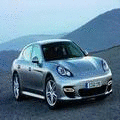
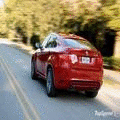
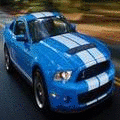
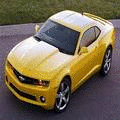


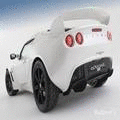
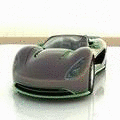









0 comments:
Post a Comment